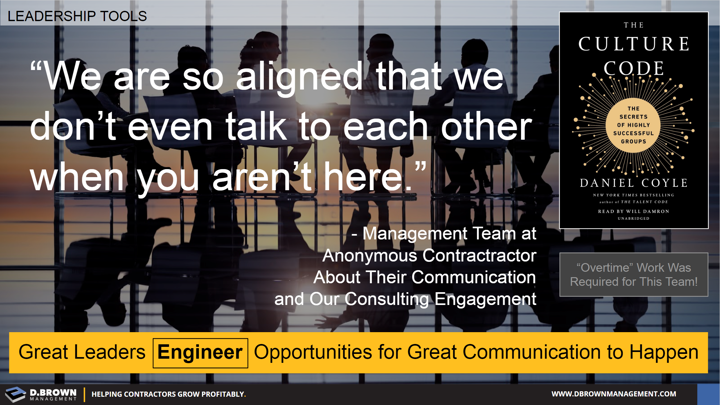But it does certainly increase the odds to the point where great communication inside and outside the company is a competency that leaders should work to deliberately build.
Communication is a skill that can be built just like any other. Communication is something that must be practiced and coached daily until it becomes a habit just like teaching someone a trade skill.
Communication includes verbal, non-verbal (body language) and written skills.
For the construction industry the ability to make diagrams, schedules, sketches and mark-up drawings are critical communication skills.
Communication is as much about listening to and learning from others as it is about ensuring that you are heard.
Communication is about both informal and formal communication routes and operating rhythms. The “water cooler” is critical for building relationships and sharing ideas. As contractors and projects scale up in size there is more need for formalized communication paths such as the submittal process as well as routine meetings and standardized agendas for ensuring communication happens.
Communication is a major aspect of culture as Daniel Coyle explores in The Culture Code

